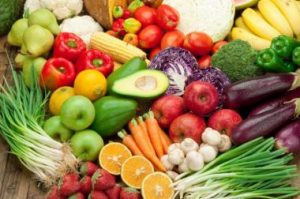Pesticide residue levels in food. The USDA has issued its annual report(2017) of pesticide residue levels in our food supply. The voluntary sampling of foods represent geographically about 50% of our population and major agricultural areas. The foods include imports and those labeled as organic. Food samples were collected at points close to consumer purchase, like warehouse distribution centers, and handled as recommended for consumers, i.e. fruits and vegetables were washed gently in water for about 20 seconds prior to sampling. Food samples were screened for 521 pesticides and 21 environmental contaminants, with special attention to both the foods most likely consumed by infants and children and toxins most harmful to this age group.

The USDA an alyzed 10,541 food samples: 83% fresh and processed fruits and vegetables, 7% milk, 7% bottled water, and 3% honey. Most foods sampled were domestic (72.4%), while 26% of samples were imported foods, and the rest (1.6%) of mixed or unknown origin. Laboratory methods detected the lowest possible levels of pesticide residues, even when those levels are well below the tolerances established. Results showed that in 2017:
alyzed 10,541 food samples: 83% fresh and processed fruits and vegetables, 7% milk, 7% bottled water, and 3% honey. Most foods sampled were domestic (72.4%), while 26% of samples were imported foods, and the rest (1.6%) of mixed or unknown origin. Laboratory methods detected the lowest possible levels of pesticide residues, even when those levels are well below the tolerances established. Results showed that in 2017:
- Over 99% of samples tested had residues well below the tolerances established, with 53% having no detectable pesticide residue.
- Less than 1% of food samples (0.59%) had residues exceeding tolerance; higher residue levels were roughly equally distributed between domestic and imported foods.
- Just over 3% of foods (3.3%) had residues with no established tolerance, again equally distributed between domestic and imported foods.
Is food grown using pesticides safe to eat? The Environmental Protection Agency (EPA), which regulates the use of pesticides in the U.S., is confident that fruits and vegetables our children are eating are safer than ever. It is important to note that just because a pesticide residue is detected on a fruit or vegetable, it does not mean the food is unsafe. Very small amounts of pesticides that may remain in or on fruits, vegetables, grains, and other foods decrease considerably as crops are harvested, transported, exposed to light, washed, prepared and cooked. The presence of a detectable pesticide residue does not mean the residue is at an unsafe level. The laboratory methods used to analyze foods can detect even minute levels of chemicals (ppm or ppb amounts), meaning that residues can be detected at levels far lower than those that are considered health risks.
Healthy, sensible food practices. For those concerned about resides in food, the following steps may reduce the amount of pesticides:
- Washing. Wash and scrub all fresh fruits and vegetables thoroughly under running water. Running water has an abrasive effect that soaking does not have. This will help remove bacteria and traces of chemicals from the surface of fruits vegetables and dirt from crevices. Not all pesticide residues can be removed by washing.
- Peeling and trimming. Peel fruits and vegetables when possible to reduce dirt, bacteria, and pesticides. Discard outer leaves of leafy vegetables. Trim fat from meat and skin from poultry and fish because some pesticides residues collect in fat.
- Select a variety of foods. Often the easiest and the most important way to reduce exposure is to eat a variety of foods, from a variety of sources. This also gives you a better mix of nutrients!
For more information, view the annual report of the pesticide data program at the link above. And stay food safe. Published on December 27, 2018



